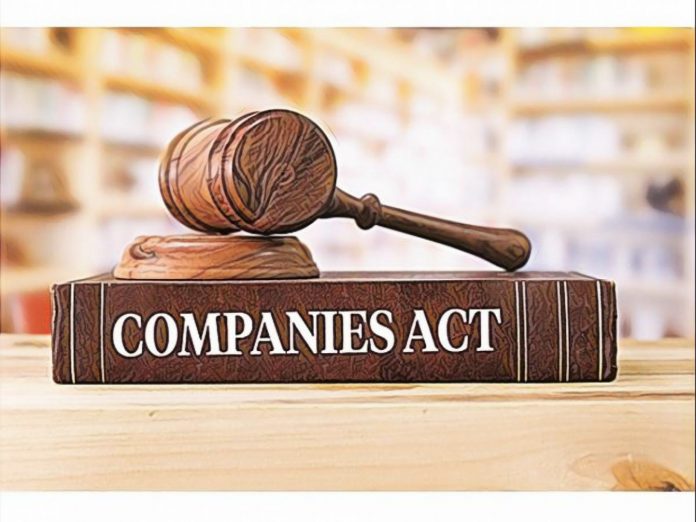This article is written by Shruti Jha pursuing a law firm Bootcamp. This article has been edited by Ojuswi (Associate Lawsikho).
This article has been published by Sneha Mahawar.
Table of Contents
Introduction
The Companies Act, 2013 is a comprehensive enactment and has provisions relating to the compliances related to the corporate entity’s transactions from its start to the end i.e., from the incorporation to the termination of the entity. One among such provisions is the provisions relating to the charges – its registration and related compliances. The article covers the registration and the effects of registration under the Companies Act, 2013.
For a better understanding of the registration of charges and their effects, it is essential to understand what a charge is.
What is Charge
Generally, a charge means a right created to the lender over the assets in order to secure repayment of the loan. It is one of the methods by which the borrower can get the loan sanctioned by providing the assets as a security/collateral. In this case, only the rights over the assets would be secured rather than creating ownership interest against the lender. This is easier in the case of corporate entities because the same entity can use assets over which the loan was approved of.
Section 2(16) of the Companies Act, 2014 defines charges to mean interest or lien created on the property or assets of a company or any of its undertakings or both as security and includes a mortgage.
Although the companies act, 2013 includes mortgages in the definition of the charges but charges are different from mortgages. Typically, a mortgage creates an ownership interest over the security used for the loan, but a charge only creates rights to the lender over the security. But the Transfer of Property Act distinguishes charge from mortgage and rather connects them in its definition.
According to Section 100 of the Transfer of Property Act, 1882, where an immovable property of one person is by an act of parties or operation of law made security for the payment of money to another and the transaction does not amount to a mortgage, the latter person is said to have a charge on the property, and all the provisions which apply to a simple mortgage shall, so far as may be, apply to such charge.
The definition of charges in the TP Act is only to provide clarity upon transfer of rights in case of Charges are not deemed to be a transfer at all under the TP Act. This is because the only right transferred under charges is security or assurance for the repayment of the loan amount. Whereas in the Companies Act, 2013 the scope of Charges is much wider and clear as it solely deals with defining charges and imposing the statutory regulations in the event of creating the charges.
Need of creating a Charge over the assets
For every transaction a corporate entity makes, they need funds. The sources of funds could be capital or borrowings to finance the project. The borrowings may include debentures, either secured or unsecured, or taking up loans from financial institutions.
Consequently, any financial institution wouldn’t lend its money without having an assurance that the money would be paid back. This assurance by the entity seeking to borrow funds could be only given through the collaterals of some assets etc, which are given for security. Now if the ownership rights are created over the assets, then it would be difficult for the entity to work in the same manner as the lender would be deemed over the asset. But creating a charge makes this simpler for the borrower as all the operations could still be continued because instead of creating ownership rights other rights are created for the lender.
A charge could also turn out to be an important source of funding as there could be a creation of the same subsequently to the same assets. Hence, financial aid could be taken upon providing already charged assets again. However, this is subjected to the consent of the earlier lender. If the earlier financing institution denies creating the subsequent charge, no subsequent charge shall be created.
Kinds of Charges
There are generally two kinds of charges which are created over the assets by the entities. They are as follows:
Fixed charges
These charges are created against specific property which is identifiable and certain and doesn’t change over time or through the period of the loan.
Floating charge
These charges are not created against a specific property that could be identifiable in nature. Generally, the assets over which floating charges are created are uncertain.
For Example, Tony Stark being the owner of Stark Industries India Ltd wants financial assistance to continue his research in futuristic technology. He wants to create a charge upon the assets rather than mortgaging as the assets would be involved in the R&D process. if he creates charges upon the Iron Man Suits then as the worth is known he would be creating a fixed charge. If he creates charges upon the stocks such as stark international, the value keeps changing (given all the factors involved) hence, the charge created upon the stocks would be a floating charge.
Registration of a Charge
Based on the above example, if Mr. Stark wishes to create a charge over the assets of Stark Industries India Ltd., he has to get it registered under section 77 of the Companies Act, 2013.
Duty to register
According to Section 77(1) of the Act, It shall be the duty of every company to create a charge within or outside India, on its property or assets or any of its undertakings, whether tangible or otherwise, and situated in or outside India, to register the particulars of the charge signed by the company and the charge-holder together with the instruments, if any, creating such charge in such form, on payment of such fees and in such manner as may be prescribed, with the Registrar within thirty days of its creation
In simple terms, the above section imposes a duty upon the entity creating charge to register the particulars which were signed/attested by the entity and the lender along with filling up the prescribed forms and prescribed fees.
The category of the charges has also been given in the provision, it states that every charge shall be registered either created within or outside India. The charge created over any property or undertakings of the entity irrespective of being tangible or intangible is mandated to be registered under the Act. The period within which the charge has to be registered is of thirty days.
Under the provision there is an extension to the period of thirty days, it could be to the extent of 300 days (if the charge was formed before the 2nd November 2018) or 60 days (if it was formed after the 2nd November 2018). If the delay persists and the entity fails to register before the above period then according to section 87 of the Act, the entity could seek an extension through the Central Government itself. But such extension is subjected to additional fees and no rights shall be affected regarding the property due to the delay.
Application of registration by the charge-holder/lender
As per Section 78 of the Act, in the event of the entity failing to register the charge within the specified period, the lender in whose favor the charge is created can apply to register. The registrar seeks the reasoning for the failure of registration at the earliest and the lender is entitled to recover the amount paid for any ordinary or additional fees and such entity has to give the expenditure incurred by the lender for such registration of charges.
Certificate of registration of Charge
The certificate of Registration of Charge is issued by ROC (Registrar of Companies) in the prescribed format. The certificate is only issued until after Roc is satisfied that the charges created are legible and in case of delay the reasoning given is acceptable or not. All the factors are considered and only then the certificate is issued and such charge shall be deemed to be registered under the Act. This certificate is also to be considered conclusive evidence.
Modification of Charge
If the entity makes any modifications to the charged assets as to its terms and conditions or the extent of the property (acquisition of property subject to the charge) or its operations, then section 79 of the Act makes it a mandatory requirement for the entity to register all such modifications under the prescribed form. Registration of such modification is required to be made within 30 days. The process of registering a modification is the same as that of the registration of the creation. The person acquiring the property/asset is deemed to have knowledge/notice of the charge being created over the property (u/s 80 of the Act).
Register of Charges
As per Section 81 of the Act, the registrar is bound to maintain a register of the Charges. Such a register would be containing the particulars of the Charges in respect of every entity (which created any such charge and was issued the certificate of registration). The register is open to inspection subject to the payment of a prescribed fee for each inspection. This section makes it clear that a charge created is a matter of public knowledge and would be available to anyone who seeks it.
Subsequently, as per section 85, the company/entity is also mandated to maintain a register at its registered office. The register shall include all the kinds of charges created by it, the period for which the charges were created, a modification made to the charges, and the particulars of such charges. The entries made in the register are required to be authenticated by the director or any other key managerial personnel authorized by the Board. This register has to be kept safe and the relevant instruments must be held good for eight years. Even this register is open to inspection subject to the reasonable restriction prescribed under the articles of the company.
Satisfaction of Charges
When the company repays its loan completely to the lender and consequently the assets provided as security will be released from the charge then it is known as the satisfaction of the charges. The act mandates the entity to inform the registrar about the satisfaction of the charges. In simple words, the satisfaction of charges is done when the transactions related to the charges are completed.
Effects of registration
If a charge is registered it comes along with its perks be it either to the charge holder or the entity creating the charge. The certificate issued acts as proof to the public that there has been a charge created over the property and the charge holder holds good interest in the same. As said earlier the certificate also acts as conclusive proof that the charge over the property is registered and no one can question the same. Besides, a company registering its charges under the act shall not have to face the consequences of non-registration. If the charge is not registered then;
- The Charge shall be void.
- The creditors can’t claim any benefits over the charged property (but could be eligible to recover their dues).
- The penalty for contravention is a fine prescribed under the act and might also be imprisoned.
Important forms under the rules prescribed for the registration of charges
CHG-1 – application for registration of charge
CHG-2 – certificate of registration by ROC
CHG-3 – certificate of registration (if modifications are made to the charge)
CHG-4 – All the relevant particulars(documentations) for the charge
CHG-5 – Memorandum as to the charges being created
CHG-6 – Notice of appointment or termination of the manager of such charge
CHG-7 – Register of Charge (to be maintained by the entity)
CHG-8 – Application for extension of the specified period to the Central Government
CHG-9 – Modifying or converting the Charge into Debentures
CHG-10 – Application for the delay to the registrar
Conclusion
From the above text, it is safe to conclude that the right of reassurance is created by way of creating a charge upon property or asset. The lender, rather than being left with the collaterals, is also given rights over the property so as for the repayment of the loan amount. Although the concept of Mortgage has different charges but it is clear from the Act that mortgage shall also be applicable to all the compliances to which charges are applicable to. Though the process of registration and modifications to the charges are sophisticated, it becomes worthwhile by making the charges valid which results in saving the entity from the repercussions of non-registration.
Reference
- https://www.icsi.edu/media/portals/0/REGISTRATION%20OF%20CHARGES.pdf
- https://keydifferences.com/difference-between-mortgage-and-charge.html
- https://taxguru.in/company-law/registration-charges-companies-act.html
- https://ca2013.com/duty-to-register-charges-etc/
- https://ibclaw.in/section-77-of-the-companies-act-2013-duty-to-register-charges-etc/
- https://taxguru.in/company-law/forms-introduced-mca-registration-charges.html
- https://www.legalserviceindia.com/company%20law/com_3.htm
- http://sonamgeda.com/satisfaction-of-charge.php#:~:text=When%20company%20repays%20its%20secured,about%20the%20satisfaction%20of%20charges
Students of Lawsikho courses regularly produce writing assignments and work on practical exercises as a part of their coursework and develop themselves in real-life practical skills.
LawSikho has created a telegram group for exchanging legal knowledge, referrals, and various opportunities. You can click on this link and join:
Follow us on Instagram and subscribe to our YouTube channel for more amazing legal content.
 Serato DJ Crack 2025Serato DJ PRO Crack
Serato DJ Crack 2025Serato DJ PRO Crack











 Allow notifications
Allow notifications



